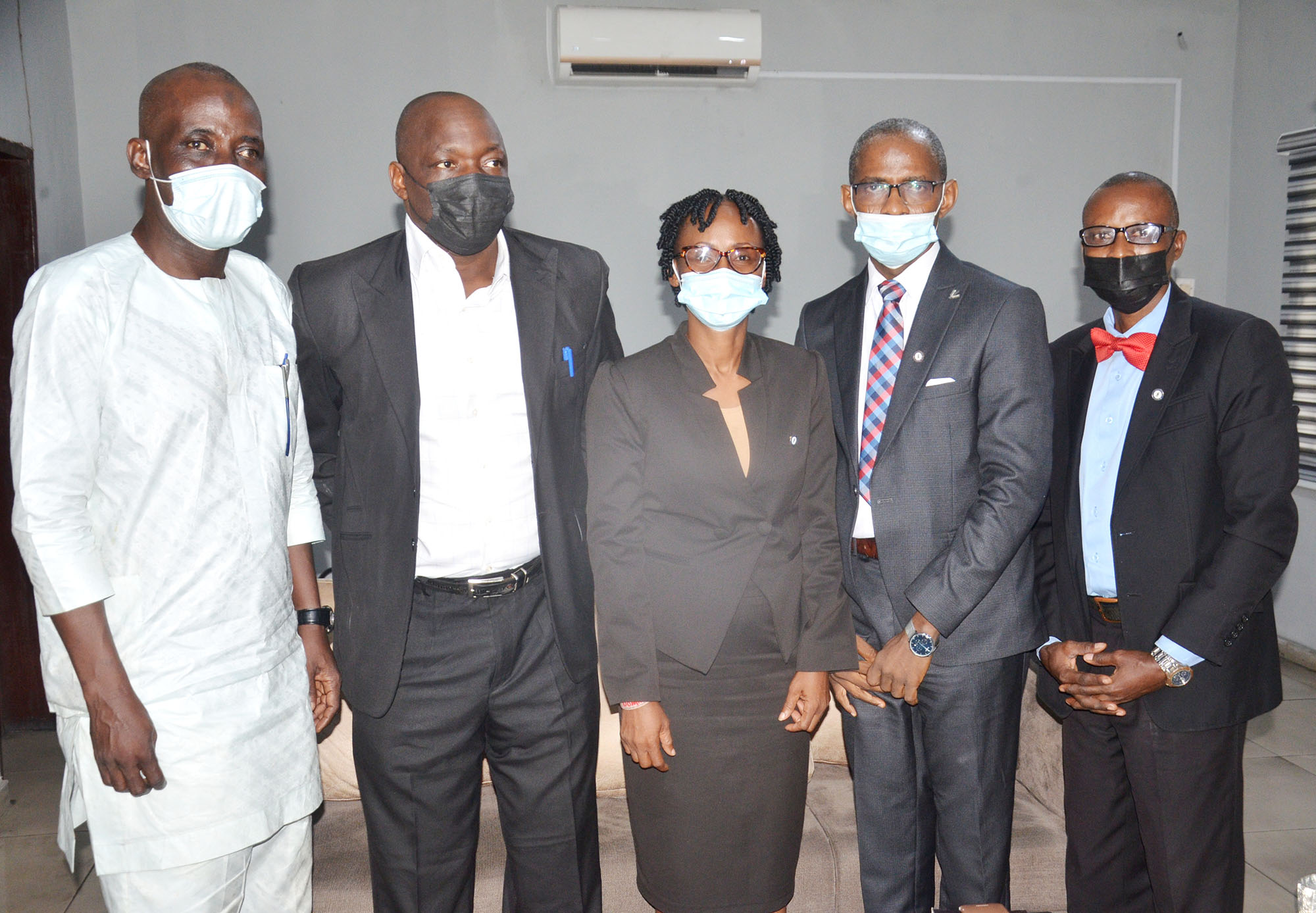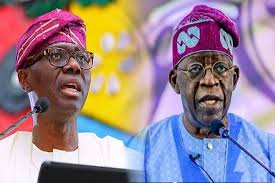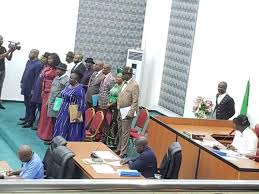Business
Two Stocks That Play Pivotal Roles In America’s Infrastructure
Rolling blackouts, freezing homes, and skyrocketing electricity prices. Back in February, Texas’ primary electric grid suffered a one-two punch wrought by the deep freeze and off-the-charts demand for power as power plants struggled to keep up with heating demand. Power outages such as the Texas one are not only becoming much more frequent compared to the situation two decades ago but are also increasing in severity mainly due to climate stresses and a power grid that’s increasingly unable to hold up. The Texas blackouts marked the third time the electric system failed to perform adequately in winter in recent years (1989, 2011, and 2021).
The devastating blackouts once again brought into sharp focus the fact that the United States is relying on an aging electrical grid that’s increasingly unstable, underfunded, and incapable of taking us to a new energy future. Despite being the wealthiest country in the world, the U.S. only ranks 13th in the quality of its infrastructure.
Indeed, our power grid is the weakest link in the ongoing energy transition.
Last year, a new study from UC Berkeley and GridLab found that it will be economically feasible for renewable energy to power 90% of a reliable grid by 2035, while only depending on natural gas for 10% of annual electricity production.
Unfortunately, whereas renewable power sources have grown dramatically in recent years, our aging electrical grid is simply incapable of fully integrating them into our energy use, leading to so much potential power wasted.
Yet, therein lies a great investment opportunity.
A Wood Mackenzie analysis has estimated the cost of shifting the U.S. power grid to 100% renewable energy over the next 10 years at a staggering $4.5 trillion. That runs the gamut from constructing and operating new generation facilities, investing in transmission and distribution infrastructure, making capacity payments, delivering customer-facing grid edge technology, and more.
President Biden’s 10-year, $2 trillion American Jobs Plan seeks to re-energize the power grid, upgrade roads, bridges, and water systems and help make U.S. infrastructure more resilient to the impacts of climate change.
But that amount will hardly be enough to go the distance, and private investors will have to step up to the plate. Modernizing the power grid alone will require $300 billion per year spread out over 15 years, or double the current annual spending of $150 billion.
That’s why investing in companies working hard to build the next-generation grid could pay off big dividends for long-term investors.
Here are our top picks, with good dividend growth opportunities serving as a safety net.
Next Era Energy Inc. NEE (-1.74%) is a Florida-based clean energy company and America’s largest electric utility holding company by market cap. NEE (-1.74%) is the world’s largest producer of wind and solar energy, with more than 50,000 megawatts of generating capacity. Next Era Energy is one of the largest utilities in the country, with two electric utilities in Florida. The company owns eight subsidiaries, with the largest, Next Era Energy Services, supplying 5 million homes in Florida with electricity. Next Era Energy Transmission integrates renewable energy and strengthens the electricity grid.
Next Era is quickly establishing itself as a leader in building next-generation grids designed to handle increased loads from renewable energy.
NextEra has been building its grid business both organically through development projects as well as inorganically through acquisitions. For example, earlier this year, NextEra acquired GridLiance for $660 million, adding 700 miles of high-voltage transmission lines across six states. Last year, NEE (-1.74%) won regulatory approval to build a new transmission line in Western New York that will ease grid congestion and facilitate the delivery of renewable energy from the region.
During the company’s latest earnings call, management reiterated its 30×30 goal to install more than 30 million solar panels, or roughly 10,000 megawatts of incremental solar capacity, in Florida by 2030 through one of its subsidiaries, Florida Power & Light (FPL).
Another of NEE (-1.74%)’s subsidiaries, Next Era Energy Partners LP(NYSE: NEP), is publicly listed and pays a 3.4% dividend one of the highest in the industry. NEP acquires, manages, and owns contracted clean energy projects with a preference for businesses with stable, long-term cash flows. NextEra Energy Partners owns interests in dozens of wind and solar projects in the United States, as well as natural gas infrastructure assets in Texas. These contracted projects use leading-edge technology to generate energy from the wind and the sun. The company’s management is shooting for 12-15% dividend growth through 2024, making this an ideal stock for income investors.
Minneapolis-based Xcel Energy Inc. XEL (-2.56%) is a leading electricity and natural gas utility serving 3.6 million customers in Minnesota, Michigan, North Dakota, South Dakota, Wisconsin, Colorado, Texas, and New Mexico.
Xcel boasts nearly 9,000MW in operating capacity for its wind projects and another 1,600MW for solar. The company has increased solar generation by more than 4x since 2011 and plans to grow its wind generation capacity by 50% over the next couple of years.
Like NextEra, Xcel Energy operates one of the biggest and fastest-growing investor-owned transmission systems with more than 20,000 miles of transmission lines across 10 states.
Xcel has a goal to invest $24.3 billion through 2025 to expand its operations, with 25% of that earmarked to expand its transmission business to help support increased renewable energy deployment. One of the company’s top projects is the proposed Colorado Pathway Transmission expansion that will see the company invest up to $1.7 billion to build 560 miles of new transmission lines to support 5.5 gigawatts of new renewable power generation.
As part of the company’s own investment thesis, Xcel shoots for consistent shareholder returns based on 5-7% annual EPS growth and similar dividend growth with a 60-70% payout ratio. The company aims to maintain a 3% dividend yield, meaning there’s room for improvement on the current yield of 2.63%.
Kimani writes for Oilprice.com
By: Alex Kimani
Business
Eazipay Offers Zero-Interest Loans To 150,000 SMEs, Employees

With a mission to ignite growth, encourage business continuity and help businesses and employees thrive, Eazipay is gearing up to propel the dreams of 150,000 SMEs and employees to new heights through her relief fund.
Gone are the days of financial constraints and stifled dreams. With Eazipay’s support, SMEs and employees alike can bid farewell to limitations and embrace a world of endless possibilities.
Whether it’s start up, business expansion or personal development, Eazipay is here to make dreams come true.
The mind-blowing initiative, which kicked off this month, would end in December, and will also offer a range of perks and benefits designed to put a smile on the faces of SMEs and employees alike.
From exclusive discounts to various advisory services and beyond, Eazipay is committed to spreading happiness and creating lasting impact in people’s lives and to the growth of businesses.
The technology company which offers products and services that range from payroll management to IT/Device management and assessments, “Eazipay isn’t just providing financial support but also unleashing a wave of growth and prosperity for SMEs and employees across the nation.
“Interested businesses and individuals can take part in this initiative directly from the Eazipay website: www.myeazipay.com”.
Business
SMEs Critical For Sustainable Dev – Commissioner

The Commissioner of Finance, Lagos State, Abayomi Oluyomi, has described Small and medium Enterprises (SMEs) as a critical engine for sustainable development in any economy.
He said this recently at the 10th anniversary of the Alert Group Microfinance Bank and the opening of their new head office in Lagos.
According to the National Bureau of Statistics, SMEs accounted for about 50 per cent of Nigeria’s gross.
He commended the positive impact of the Alert MFB as it empowers SMEs in the State.
“Alert MFB in the past 10 years has been at the forefront of empowering SMEs in Lagos State, disbursing over N30bn in loans to over 30,000 individuals having small to medium businesses over that period, which is quite remarkable”, he said.
Speaking, the Group Managing Director of Alert Group, Dr Kazeem Olanrewaju, revealed that the financial institution commenced business in 2013 as a microfinance bank.
“We started this journey in 2013 and it has been expanding. Today, they have about 10 branches across Lagos. They have supported well over 30,000 clients and have disbursed over N30bn.
“The company has been profitable since the second year. Looking at the market and the available opportunity, the Alert MFB board decided to come together to establish a Microfinance Institute (MFI), which is the Auto Bucks Lenders”, Dr. Olanrewaju said.
The GMD further stated that the company was focused more on supporting businesses and small and medium enterprises.
“The loan to support business represents over 98 per cent. The consumer loans you will see are the ones given to entrepreneurs. So, the area of focus of Alert MFB and Auto Bucks Lenders is to support businesses across the country.
“With the establishment of Auto Bucks Lenders, we have the opportunity to also do business outside Lagos. So, presently, we have offices in Ogun State and Oyo State. We intend to go to every part of Nigeria to support what we are doing”, he declared.
Business
Retailers Explain Price Drop In Cement Cost

The cement market, in the last couple of weeks, has seen a significant turnaround with prices tumbling from between N10,000 and N15,000 per 50kg bag to between N7,000 and N8,000.
The sudden rise in the prices of cement and other major building materials in February this year upsets the construction industry, especially in real estate, where many developers were forced to abandon building sites.
A recent market survey conducted by The Tide’s source in different locations across the country confirmed a price drop, ranging between N7,000 and N7,500 per bag, though BUA cement is selling for N7,500 to N7,800 per 50kg bag, depending on location.
Both entrepreneurs and major distributors who were interviewed, explained that the price drop is due to low demand and government’s intervention.
At the peak of the price hike, the Federal Government called a meeting with major producers where it was agreed that a bag of cement should be between for N7,000 to N8,000, depending on location.
But the producers did not comply with this agreement immediately, followin which “Nigerians stopped demanding for cement; many project sites were abandoned as developers sat back and waited for the prices to come down.
“So, what has happened is an inter-play of demand and supply with price responding, which is Economics at work”, Collins Okpala, a cement dealer, told the source in Abuja.
In the Nyanya area of the Federal Capital Territory, a 50-kg bag of Dangote cement now sells for between N7,000 and N7,500, while BUA cement sells for between N8,500 and N9,500, down from between N11,000 and N12,000 respectively.
In Lagos, the product has seen significant price drop too. In Ojo area of the state, Sebastin Ovie, a dealer, told our reporter that what has happened is a crash from the January price, attributing the crash to low demand and stronger naira.
“The current price of the product is between N7,000 and N7,500 per 50kg bag, depending on the brand. This is a significant drop from the average of N12,000 which most dealers were selling in February and March”, he said.
A dealer in Agege area of the state who identified himself as Taofik Olateju, told the source that sales are picking up due to the drop in price.
He recalled that Nigerians at a point stopped buying due to the high price of the product at N15,000 per bag.
“I am sure most dealers ran at a loss then because we had mainly old stocks which we wanted to offload quickly”, he said, confirming that the product sells for between N7,500 and N8,000, depending on the brand and the demand for the brand.
Continuing, Olateju noted that “because the naira is now doing well against the dollar, it will be unreasonable for manufacturers to continue to sell the product at the old prices. I also believe that the federal government’s intervention and the threat to license more importers may have worked, leading to the reduction in price”.
In Enugu, the source reports that the product sells for between N7,200 and N7,500 depending on the brand and location.
“This is a city where the price of a 50kg bag went for as high as N12,000 and N13,000 in some cases in February and March”, Samuel Chikwendu said.
He added that the prices of other building materials, especially iron rods, have also dropped considerably which is why, he said, activities are picking up again at construction sites.
The story is slightly different in Owerri, the capital of Imo State, where Innocent Okonkwo told the source that low demand was also driving the price drop, adding that a 50kg bag was selling for N9,000 on the average in the state.
Sundry market observers are optimistic of further price reductions, but they remain cautious as manufacturers, wholesalers, and retailers continue to play critical roles in setting prices for end-users.
They lamented, however, that despite Nigeria’s status as one of the largest producers of cement in Africa, the price of the product continues to rise, particularly in the face of high inflation impacting the building materials market generally.
Okpala in Abuja highlighted the variations arising from direct sourcing from manufacturers versus procurement through dealers, with traders holding old stocks selling products at prices ranging from N8,500, N8,300 to N8,000 per bag.
Lucy Nwachukwu, another dealer in Abuja, said the significance of procurement volume in determining cement costs, noting that stability in prices has been observed over the past month, with the product retailing for between N7,000 and N7,800 depending on the brand.
In Port Harcourt also, a customer, Daniel Etteobong Effiong, said the price goes between N7500 to N8500, depending on the brand and the location one is buying from.
-

 News4 days ago
News4 days agoFG To Launch 2,700 CNG Buses, Tricycles Before May 29
-
News12 hours ago
Shops Allocation: Fear Not, Gov Fubara Assures Mile One Market Traders
-
Nation10 hours ago
Customs Intercepts Over 6,000 Explosives In Kebbi
-

 Maritime4 days ago
Maritime4 days agoTinubu, Others To Honour Global Transport Roundtable
-

 Focus4 days ago
Focus4 days agoRe-Igniting Rivers Agricultural Stakes
-
Niger Delta11 hours ago
APC S’South Executives Strategise For Victory
-
Business10 hours ago
Empty ATMs: ‘Entrepreneurs, Customers, Banks, PoS Operators Accountable’
-

 Politics4 days ago
Politics4 days agoBayelsa Assembly Grills, Confirms Diri’s Commissioner- Nominees

